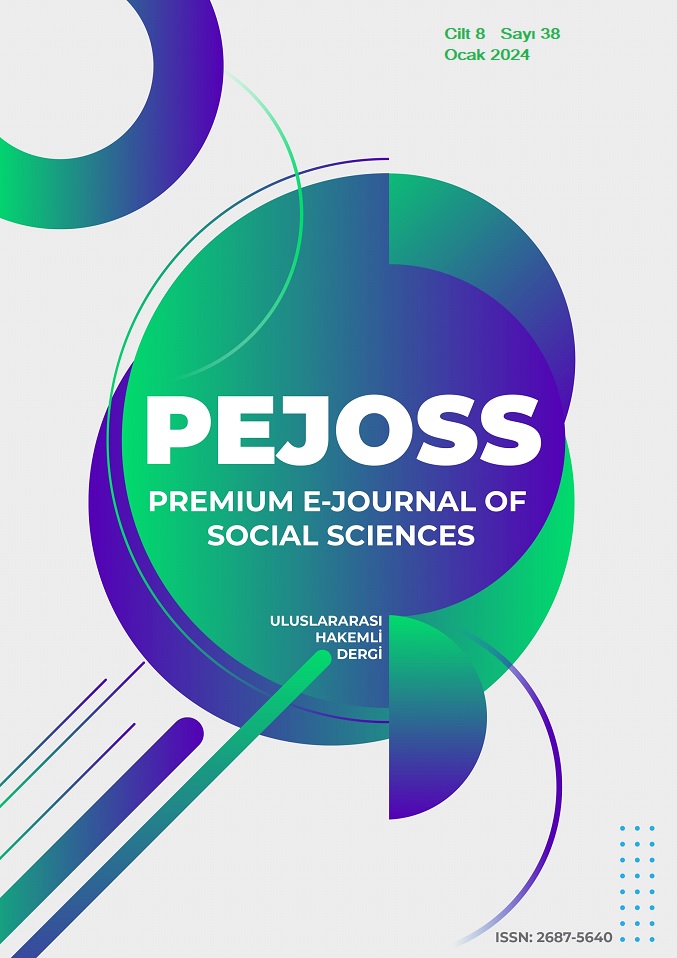Eccentricity of Soap Bubble Between Parallel Plates
DOI:
https://doi.org/10.5281/zenodo.10642733Keywords:
Soap Bubble, Eccentricity, Surface TensionAbstract
This work; creates a model to show the eccentricity of the soap bubbles and the tension relationship between the plates. The study aims to make a modest contribution to the comprehensive field of minimal surfaces.
An experimental model study was conducted in the research. The conclusions reached as a result of the findings obtained;
The height and width of soap bubbles between parallel plates are quadratic functions of the tension between the plates, and as the tension increases, the height increases and the width decreases.
The shape of the soap bubble in the electric field of the parallel plate is part of the ellipsoid and its eccentricity is proportional to the voltage.
The deformation of the soap bubble is the balance between surface tension and electric field strength, analysis of the force balance of the soap bubble model can be used to determine the relationship between the curvature of the soap bubble model and the surface charge density.
The study establishes a theoretical model that proposes a method to calculate the shape of soap bubbles and actually discusses it through numerical simulation, finally obtaining the proportional relationship between the eccentricity of the soap bubble and the stress, which is quite close to the experimental data.
The next researcher might study the jerky states of soap bubbles in electric fields. It can investigate the equivalent elasticity coefficient of the system and the oscillation frequency of the soap bubble by observing the micro-oscillation frequency of soap bubbles under different DC electric fields of the system or their forced oscillation in a time-varying electric field.
Downloads
References
Aydar, A. Y., & Bağdatlıoğlu, N. (2014). Yemeklik yağların yüzey gerilimi ve temas açılarının belirlenmesinde uygulanan yöntemler. Akademik Gıda, 12(1), 108-114.
Ergül, O., & Gürel, L. Elektromanyetik saçınım problemlerinde elektrik alan, manyetik alan ve birlesik alan integral denklemleri. URSI-Türkiye 2002 Bilimsel Kongresi, 158-161.
Göktepe, F., & Mülayim, B. (2015). Elektrik Alan Lif Çekimi (Elektrospinning) ile Nano Liflerden İplik Üretim Yöntemleri. Tekstil ve Mühendis, 22(99), 50-67.
Güner, Y., & Çağdaş, G. (2019). Üç Yönlü Periyodik Minimal Yüzeyler ile Biçim Arama Yaklaşımı. Journal of Computational Design, 1(1), 35-54.
Işık, S. G., Kırbıyık, M., Çevik, A., Kalkan, E. B., Okur, S.& Yılmaz, M. (2018). Yüzey Aktif Organik Maddelerin Tayini. Gümrük ve Ticaret Dergisi, (12), 75-80.
Kavurmacıoğlu, Ö., & Arıdağ, L. (2015). Strüktür Tasarımında Geometri ve Matematiksel Model İlişkisi. Beykent Üniversitesi Fen ve Mühendislik Bilimleri Dergisi, 6(2), 59-76.
Özsöylev, H. N. (1998). Sabun Baloncuklarıyla Deneysel Matematik. Bilim ve Teknik, (06), 44-48.
Ursavaş, N., Aytar, A. & Alpay, E. (2020). Farklı Öğretim Programlarının Su ile İlişkili Kazanımlar Açısından İncelenmesi. Anadolu Öğretmen Dergisi, 4(1), 98-113.
Downloads
Published
How to Cite
Issue
Section
License
Copyright (c) 2024 Premium e-Journal of Social Science (PEJOSS)

This work is licensed under a Creative Commons Attribution 4.0 International License.


